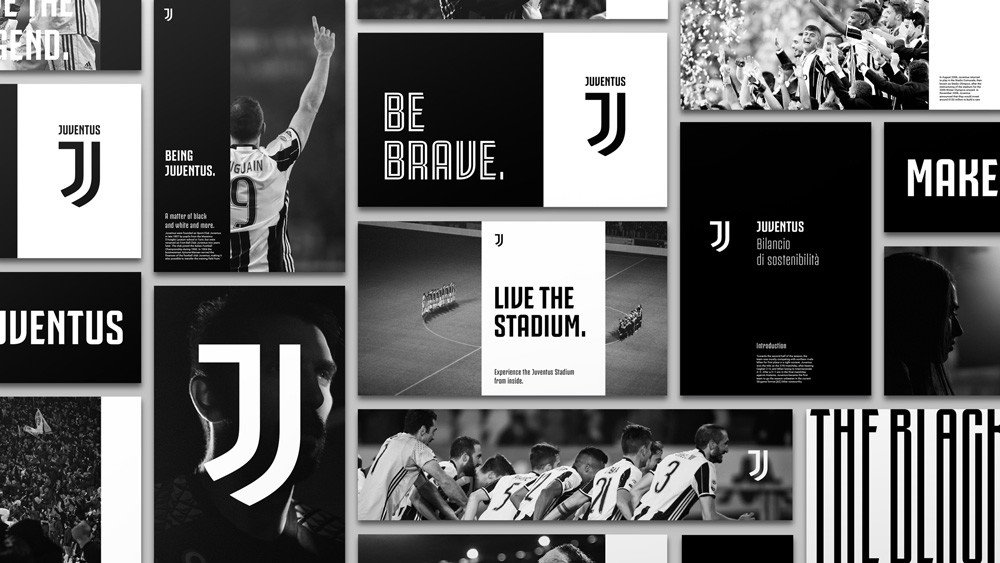Change before you have to
When a brand has reached the top of their game, the way forward is to adapt for the world of today and the unknown of tomorrow. The brands that can make adjustments to their strategies are those that continue to grow their businesses. Changing a business model doesn't mean a change in a brand's values. If brands can stand for something significant – their purpose, rather than their product offering – they can extend their brands outside of their core category to reach new markets.
While companies are developing strategic plans to reach new markets, they'll need to ask themselves, "can our current brand drive us into this category?" If not, strategists and designers need to align with those business goals to evolve the branding to resonate in new areas.
Take the revolutionary branding for Italian soccer club Juventus, established in 1897 and one of the top club teams in the world. What was once a local soccer club that received limited local media coverage, Juventus has gone increasingly global, with fans at every depth and in every corner of the world. They have established goals to become more relevant to a wider international audience, and to expand into new markets. They've rebranded themselves as a global identity defined by an attitude – "life is a matter of black and white" – with soccer at its origin, not its boundary.
Other historic brands have charted their own path as well, adapting to the market and remaining relevant. John Deere was a blacksmith who crafted a plow in 1837 and has since become the premiere brand for land-cultivating equipment. AT&T, founded by Alexander Graham Bell, started as a telephone company in 1879 and is now a leader in global networks and communications. IBM got its start as a computing, tabulating, and recording company in 1911 and has been at the forefront of leading technologies since, most recently with their cognitive system simply known as Watson.
So what does it take? How have all of these brands survived for over a century while others have fallen? We can measure their effectiveness against five criteria, defined by Marty Neumeier in his book The Brand Gap. Is it distinctive enough to stand out from the crowd? Is the brand relevant in its context? Does it drive your emotions to be memorable? Can its extendibility reach across categories, mediums, and cultures? Does it have the depth to speak to audiences on different levels? All of these brands have one thing in common. They've adapted to the market and evolved to stay ahead of the competition. Or as the president of Juventus Andrea Angelli put it, "Change before you have to."
